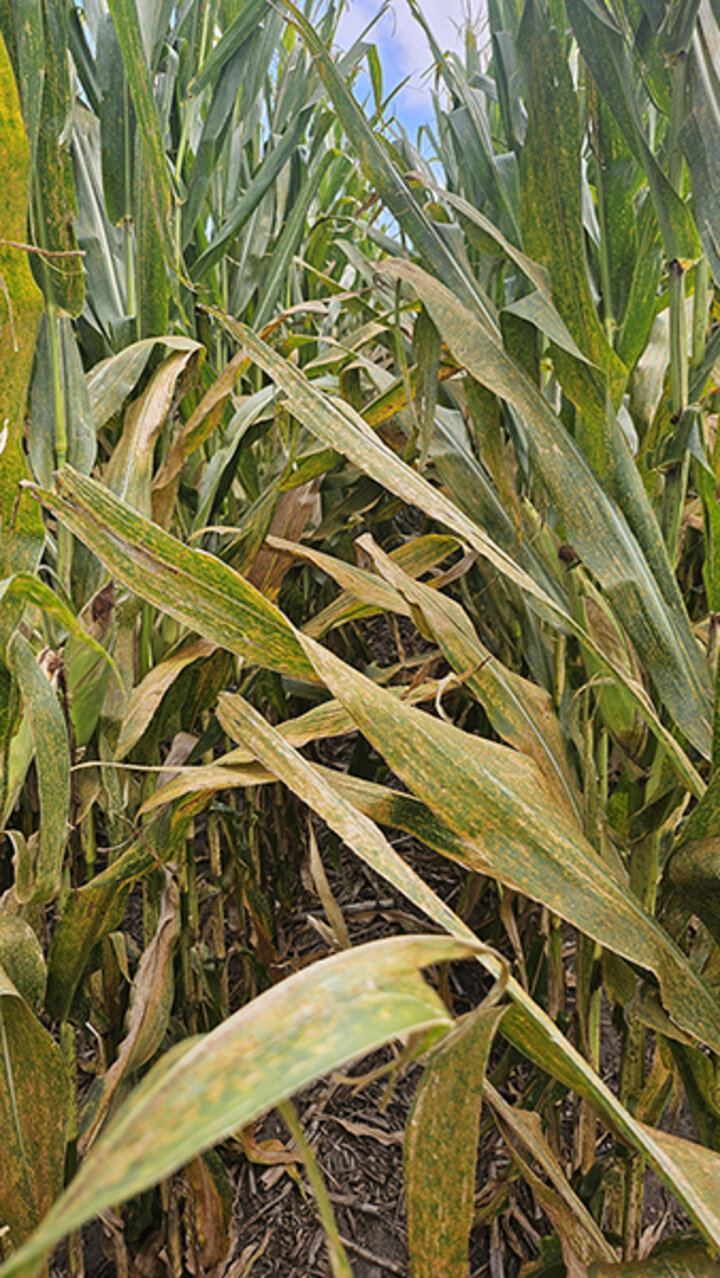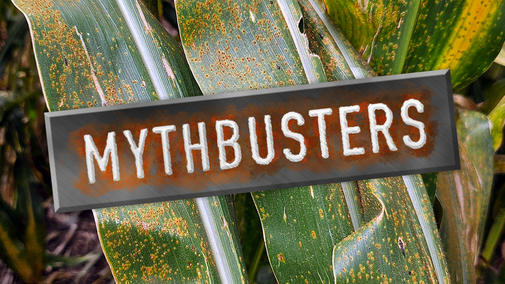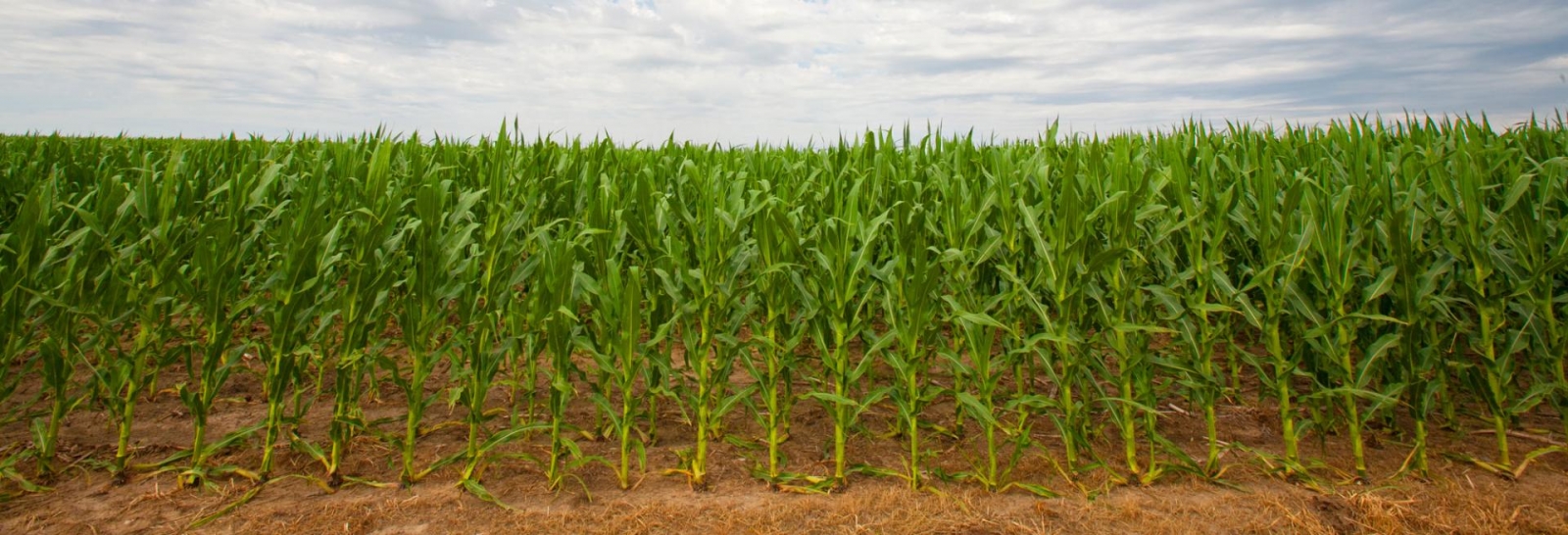
This growing season was one for the record books in parts of Nebraska — and not in a good way when it comes to corn disease.
Southern rust, in particular, was more severe in extreme eastern Nebraska than witnessed in recent history — and for the second year in a row. It also showed up in parts of northeast Nebraska where it rarely causes yield loss.
It’s only natural to reflect on what occurred and ask why, trying to piece together reasonable explanations. Unfortunately, misinformation can spread quickly, and numerous false rumors are already circulating. Let’s address some of these concerns before we start making decisions that could affect next year’s crop.
❌ Myth #1: Overwintering Rust
The southern rust fungus cannot overwinter in Nebraska.
The southern rust fungus (Puccinia polysora) needs to infect living, green corn in order to survive, and there is no known alternate host. Thus, the fungus can’t overwinter anywhere the climate doesn’t support corn growth through the winter months.
In fact, our rust fungi are likely blown north into the United States from subtropical locations, such as parts of Mexico, where corn is grown year-round. The southern rust fungi typically reach Nebraska in late July; however, this year they arrived earlier than usual, with the first confirmed sighting on July 9 — the earliest on record for the state.
❌ Myth #2: Infected Grass
Southern rust doesn't infect brome or other grasses nearby.
Rust fungi tend to have very narrow host ranges, infecting only one or a few plant species. However, there are many rust fungal species, which affect almost every major plant species. Because several species of rust thrive under the same environmental conditions, it’s not unusual to see multiple plant species showing rust symptoms at the same time — even though they’re caused by different pathogens.
❌ Myth #3: Super Strains
There is no new “super strain” of southern rust fungus.
It may be hard to believe after seeing so much disease this past year, but the severity we observed was due to prolonged periods of extremely favorable weather conditions — southern rust thrived under high relative humidity and average temperatures around 80°F.
Southern rust is not uncommon in Nebraska. In fact, it has been confirmed in 19 of the last 20 years, but thankfully, it’s not usually as prevalent as we’ve experienced the last couple of years.
If you remember 2006, you might recall another historic outbreak centered in south-central Nebraska. That season also brought delayed corn planting from spring rains, followed by ideal weather for rust development during the first two weeks of August. Many fields suffered stalk weakening and lodging, which caused memorable harvest challenges.
❌ Myth #4: Fungicide Failures
Fungicides did not fail to control southern rust this year.
Although yield data are still coming in, most reports indicate that fungicides performed well against southern rust this year. During years with substantial disease pressure, differences in fungicide performance become more apparent, underscoring the importance of selecting effective products and applying them at the right time. Results from multiple states, compiled by the Crop Protection Network, reinforce these findings.
For more detailed guidance, check the CPN publication, “An Overview of Southern Rust,” which includes recommendations for fungicide application timing for southern rust, identification and current distribution. “Fungicide Efficacy for Control of Corn Foliar Diseases” can be a useful guide when evaluating product efficacy for specific diseases and is updated annually (and included in the Nebraska Extension NebGuide EC130, “Guide for Weed, Disease, and Insect Management in Nebraska” from Nebraska Extension).
Remember: Even the best product can’t perform well without good coverage and proper timing, especially in a season like 2025 when disease pressure was unusually high.
There are surely more rumors and myths out there, but accurate information is key to good management. If you have questions or concerns about crop diseases, contact Nebraska Extension or submit samples to the UNL Plant and Pest Diagnostic Clinic for help with diagnoses and management recommendations.

